Wenjing Lu
External Large Foundation Model: How to Efficiently Serve Trillions of Parameters for Online Ads Recommendation
Feb 26, 2025



Abstract:Ads recommendation is a prominent service of online advertising systems and has been actively studied. Recent studies indicate that scaling-up and advanced design of the recommendation model can bring significant performance improvement. However, with a larger model scale, such prior studies have a significantly increasing gap from industry as they often neglect two fundamental challenges in industrial-scale applications. First, training and inference budgets are restricted for the model to be served, exceeding which may incur latency and impair user experience. Second, large-volume data arrive in a streaming mode with data distributions dynamically shifting, as new users/ads join and existing users/ads leave the system. We propose the External Large Foundation Model (ExFM) framework to address the overlooked challenges. Specifically, we develop external distillation and a data augmentation system (DAS) to control the computational cost of training/inference while maintaining high performance. We design the teacher in a way like a foundation model (FM) that can serve multiple students as vertical models (VMs) to amortize its building cost. We propose Auxiliary Head and Student Adapter to mitigate the data distribution gap between FM and VMs caused by the streaming data issue. Comprehensive experiments on internal industrial-scale applications and public datasets demonstrate significant performance gain by ExFM.
Generalized Low-Rank Matrix Completion Model with Overlapping Group Error Representation
Jul 11, 2024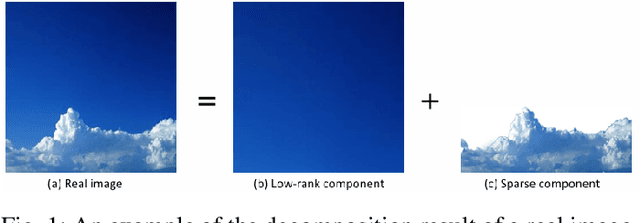
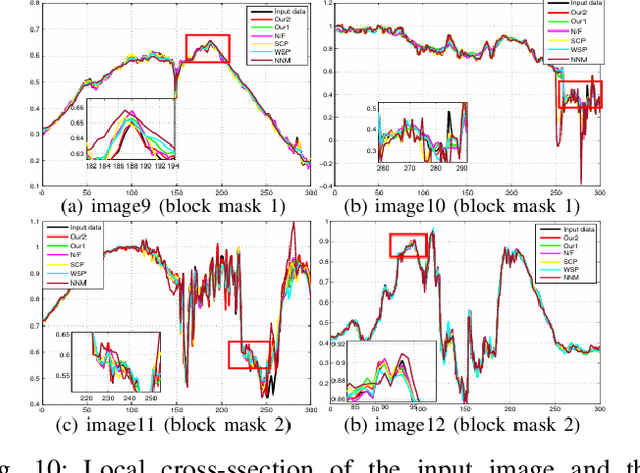
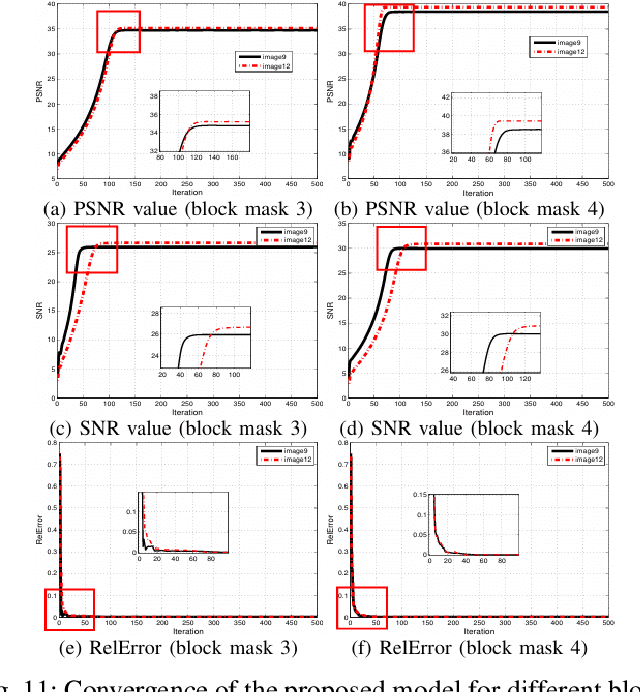

Abstract:The low-rank matrix completion (LRMC) technology has achieved remarkable results in low-level visual tasks. There is an underlying assumption that the real-world matrix data is low-rank in LRMC. However, the real matrix data does not satisfy the strict low-rank property, which undoubtedly present serious challenges for the above-mentioned matrix recovery methods. Fortunately, there are feasible schemes that devise appropriate and effective priori representations for describing the intrinsic information of real data. In this paper, we firstly model the matrix data ${\bf{Y}}$ as the sum of a low-rank approximation component $\bf{X}$ and an approximation error component $\cal{E}$. This finer-grained data decomposition architecture enables each component of information to be portrayed more precisely. Further, we design an overlapping group error representation (OGER) function to characterize the above error structure and propose a generalized low-rank matrix completion model based on OGER. Specifically, the low-rank component describes the global structure information of matrix data, while the OGER component not only compensates for the approximation error between the low-rank component and the real data but also better captures the local block sparsity information of matrix data. Finally, we develop an alternating direction method of multipliers (ADMM) that integrates the majorization-minimization (MM) algorithm, which enables the efficient solution of the proposed model. And we analyze the convergence of the algorithm in detail both theoretically and experimentally. In addition, the results of numerical experiments demonstrate that the proposed model outperforms existing competing models in performance.
ERD: Exponential Retinex decomposition based on weak space and hybrid nonconvex regularization and its denoising application
Jul 11, 2024
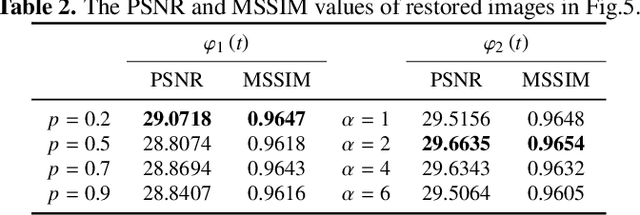
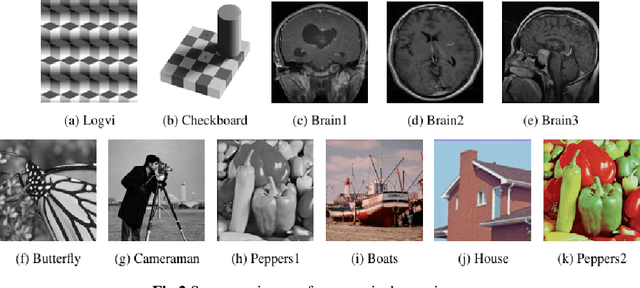

Abstract:The Retinex theory models the image as a product of illumination and reflection components, which has received extensive attention and is widely used in image enhancement, segmentation and color restoration. However, it has been rarely used in additive noise removal due to the inclusion of both multiplication and addition operations in the Retinex noisy image modeling. In this paper, we propose an exponential Retinex decomposition model based on hybrid non-convex regularization and weak space oscillation-modeling for image denoising. The proposed model utilizes non-convex first-order total variation (TV) and non-convex second-order TV to regularize the reflection component and the illumination component, respectively, and employs weak $H^{-1}$ norm to measure the residual component. By utilizing different regularizers, the proposed model effectively decomposes the image into reflection, illumination, and noise components. An alternating direction multipliers method (ADMM) combined with the Majorize-Minimization (MM) algorithm is developed to solve the proposed model. Furthermore, we provide a detailed proof of the convergence property of the algorithm. Numerical experiments validate both the proposed model and algorithm. Compared with several state-of-the-art denoising models, the proposed model exhibits superior performance in terms of peak signal-to-noise ratio (PSNR) and mean structural similarity (MSSIM).
Self-supervised Assisted Active Learning for Skin Lesion Segmentation
May 14, 2022



Abstract:Label scarcity has been a long-standing issue for biomedical image segmentation, due to high annotation costs and professional requirements. Recently, active learning (AL) strategies strive to reduce annotation costs by querying a small portion of data for annotation, receiving much traction in the field of medical imaging. However, most of the existing AL methods have to initialize models with some randomly selected samples followed by active selection based on various criteria, such as uncertainty and diversity. Such random-start initialization methods inevitably introduce under-value redundant samples and unnecessary annotation costs. For the purpose of addressing the issue, we propose a novel self-supervised assisted active learning framework in the cold-start setting, in which the segmentation model is first warmed up with self-supervised learning (SSL), and then SSL features are used for sample selection via latent feature clustering without accessing labels. We assess our proposed methodology on skin lesions segmentation task. Extensive experiments demonstrate that our approach is capable of achieving promising performance with substantial improvements over existing baselines.
 Add to Chrome
Add to Chrome Add to Firefox
Add to Firefox Add to Edge
Add to Edge